A few weeks ago, myself and some of my best friends made our annual pilgrimage to Pyramid Lake in Nevada. Pyramid Lake is no secret to fishermen across the West, but it remains one of the most unique places I’ve had the pleasure of fishing. Located entirely on Tribal lands of the Paiute people, Pyramid Lake has a fascinating cultural, geological and ecological history and provides a telling narrative about the history of the West.
The first time I drove to Pyramid Lake, I couldn’t believe what I was seeing. After driving day and night across the seemingly endless windblown and desert-like sage flats of Utah and Nevada, a vast shimmering expanse of blue appeared below the sunrise. The lake is fifteen miles long, eleven miles wide and holds roughly 23,660,000 acre-feet of water. To give you an idea of the size of this massive lake, it holds about 25 percent more volume than the Great Salt Lake.
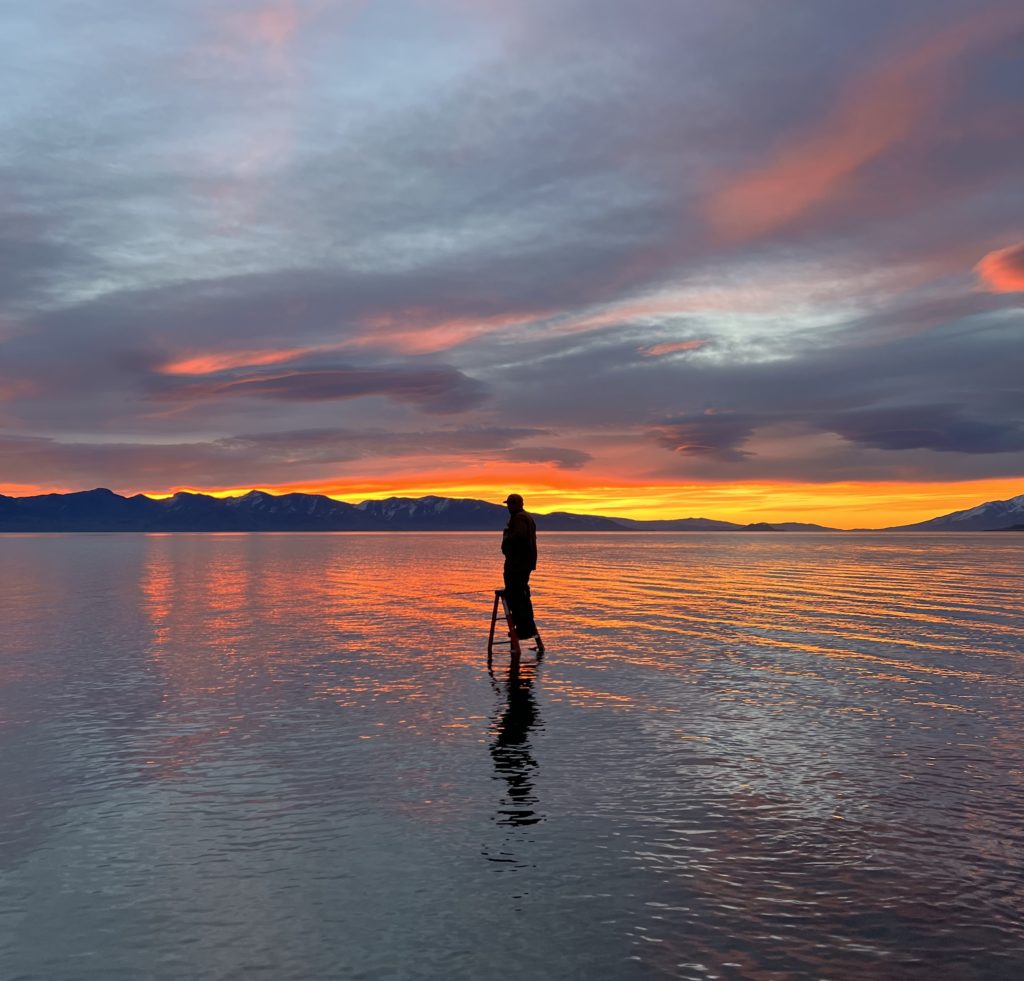
Photo by Tim Stanley @t_stanley__
Pyramid lake is a remnant of Ancient Lake Lahontan, an inland sea that covered most of Nevada during the Pleistocene. As the sea receded, the topography of the Truckee River basin formed Pyramid Lake. Pyramid is often referred to as the “Salty lake” or “Salty pond,” because it has a salinity about ⅙ that of sea water.
Because of its natural history, Pyramid Lake is home to a unique ecosystem that in many ways feels prehistoric. Large outcroppings of Tufa rock are found throughout the lake, including a large Tufa formation in the shape of a Pyramid which gives the lake its modern name. The lake is home to a number of remarkable and curious creatures like the Cui-ui sucker, Tui Chub and Lahontan Cutthroat Trout. The world record Cutthroat trout was caught in Pyramid lake, and as a fisherman, that’s why I go. But, Lahontan Cutthroat Trout have a complicated history.

Photo by Keaun Beacom @keaun_b
The original strain of Lahontan Cutthroat, which is storied to reach colossal sizes, went extinct in the early nineteenth century after the construction of the Derby Dam. Though commercial fishing of the lake reduced some fish numbers, the dam prevented these trout from spawning in the Truckee river, and by 1939 they went extinct.
In the 1970’s, Pyramid Lake was restocked with a strain of cutthroat trout found in Summit Lake, Nevada. These “summits” are gorgeous fish, and grow to be 8-10 pounds, a trophy trout by any other fishery’s standards. But, with the 1925 world record of 41 pounds, and rumors of 50-60 pound fish, the Summit strain fish don’t quite live up to the historical standard.
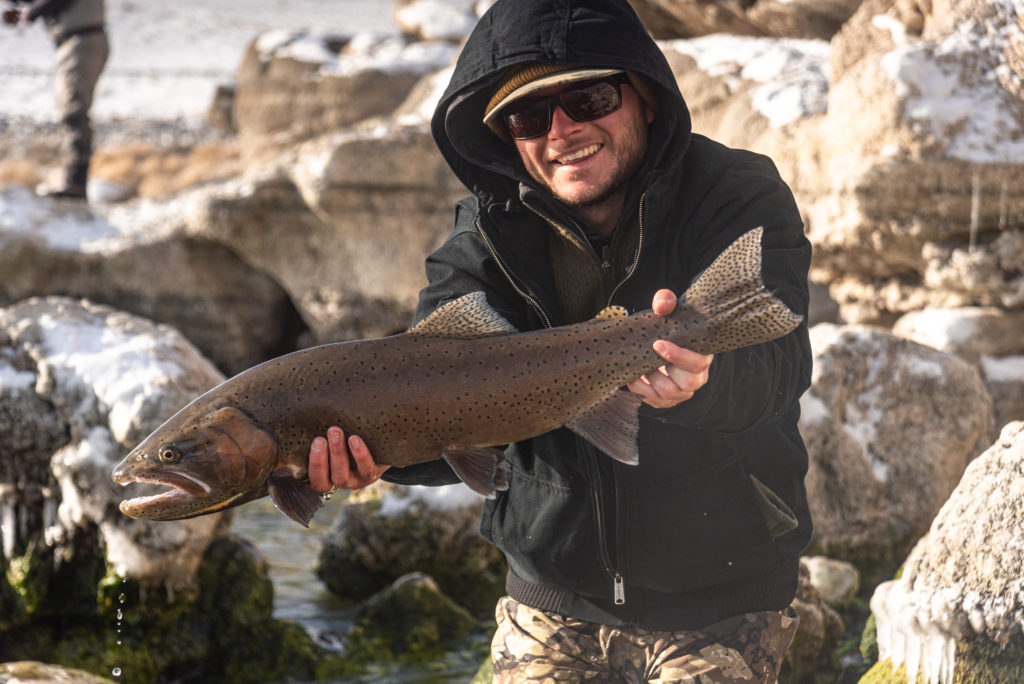
Photo by Tim Stanley @t_stanley__

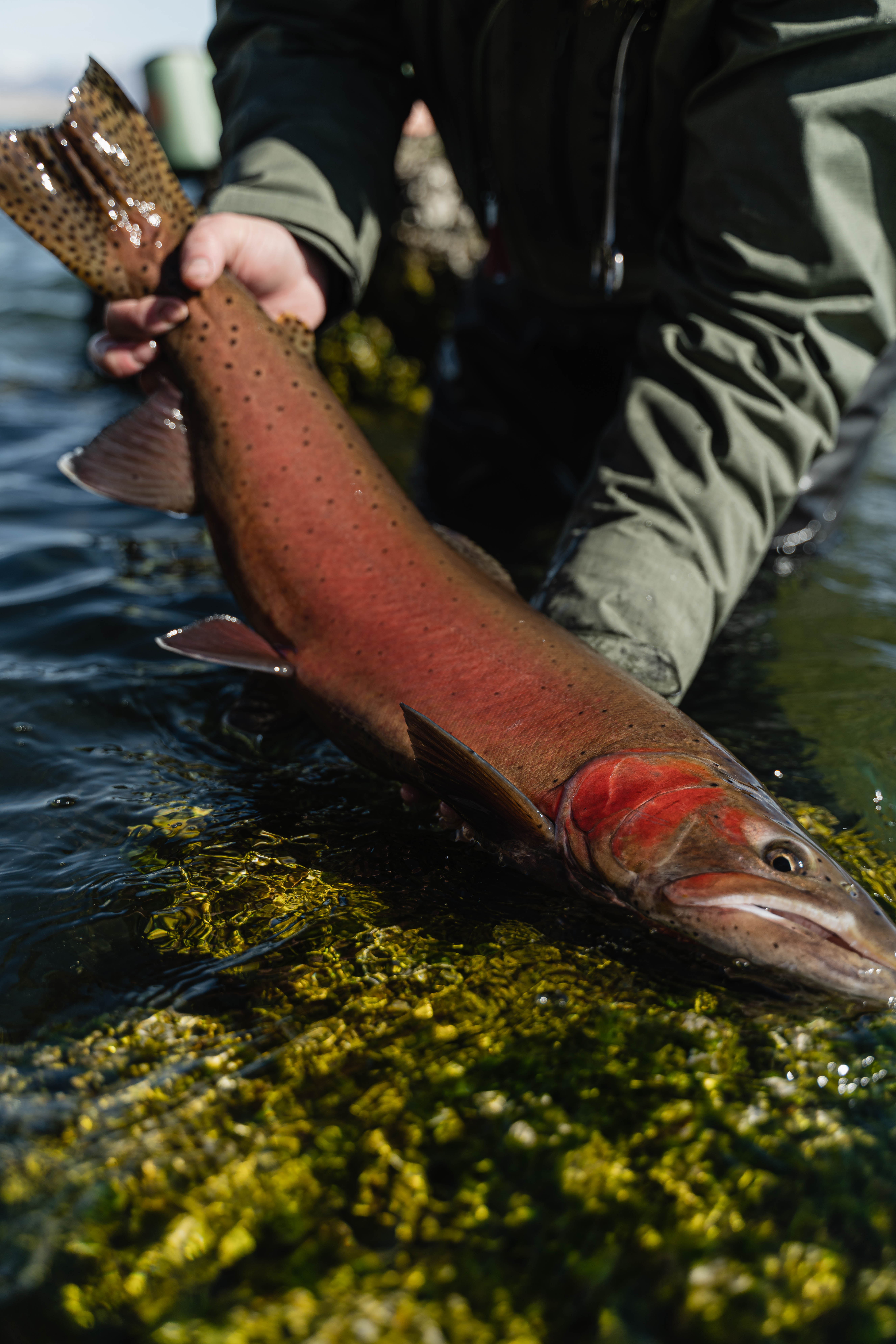
Photos by Keaun Beacom @keaun_b
But things changed in 2006 when biologists discovered a strain of Lahontan cutthroat trout near Pilot Peak, Nevada that proved to be very genetically similar to samples of the extinct Lahontans. Remarkably, these fish that only grew to around 9-12 inches in mountain streams transformed into voracious predators when introduced to the abundant food sources found in Pyramid Lake. The introduction seems to have been successful, because the week I was there our group landed multiple fish from 15-18 pounds, and the whiteboard at the bar claimed someone caught a 28 pound Pilot Peak strain!
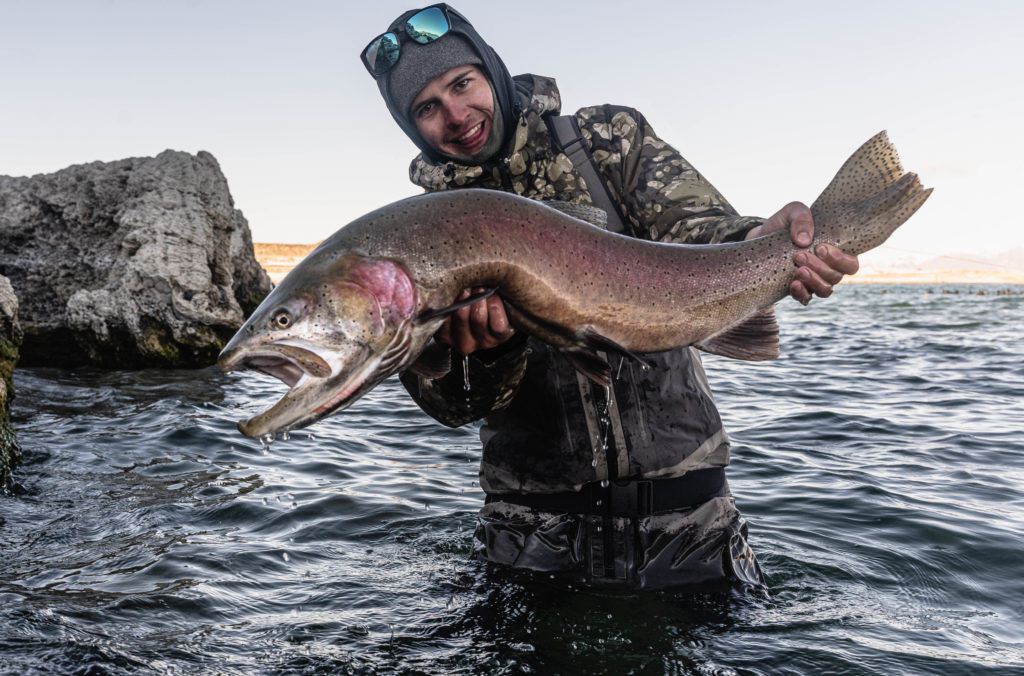
Photo by Keaun Beacom @keaun_b
When it comes to fishing for these prehistoric beasts, there are generally two approaches. The sandy beaches found across the lake offer the opportunity to strip streamers, leeches and popcorn beetles. Coming tight on a 30+ inch trout on the strip is a truly awesome feeling, and these fish hit hard!
Fishermen often wade ladders out into 3-5 feet of water and stand on them to get greater range on their cast. It looks like a real spectacle to newcomers, but there’s something special about standing in a line of ladders with other dedicated anglers. Plus, that’s just the way things go at Pyramid, you’re unlikely to find a spot where you’ll be alone. But, everyone understands that, and normal fishing etiquette is swapped out for laughs, smiles and new friends that’ll help you net fish!
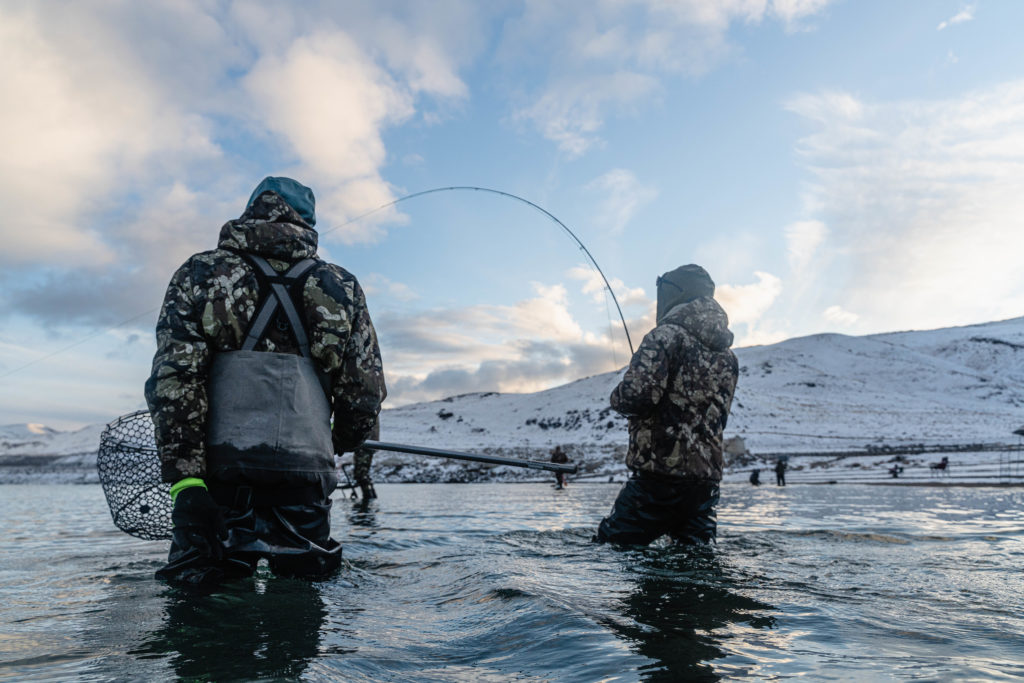
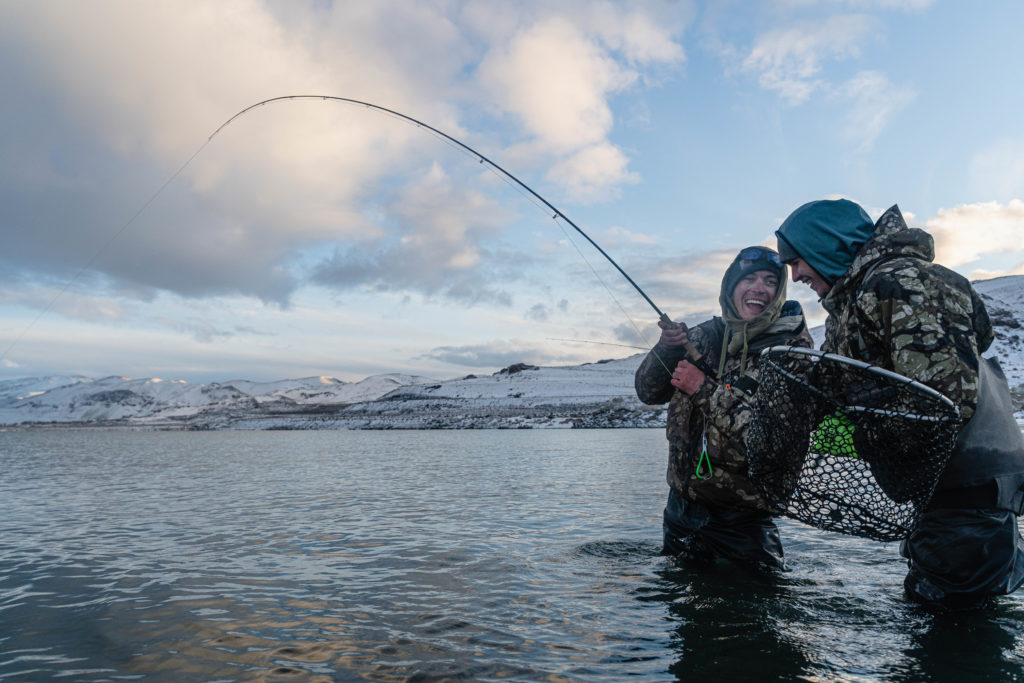

Teamwork Making the Dream Work!
Photo by Keaun Beacom @keaun_b
Another popular way to fish is hanging chironomids and balanced leeches or baitfish underneath an indicator. This will also land fish on the beaches, and is the preferred method when fishing off of the drop offs created by Tufa rock formations. Stripping flies over sharp rocky bottoms is a good way to tear up some perfectly good fly lines, so I wouldn’t recommend it. Pyramid can be as tough on your gear as some saltwater scenarios, so make sure to bring a few of everything! (This year our group broke 4 rods and last year we lost two fly lines… it was still worth it though!)
However you chose to fish, persistence is key. The fishing at Pyramid can be really streaky, but you can go from zero to hero in the blink of an eye! Just holding one of these fish in your hands shows you that they are a different breed. They have a set of needle sharp teeth, huge heads and pull like a freight train.
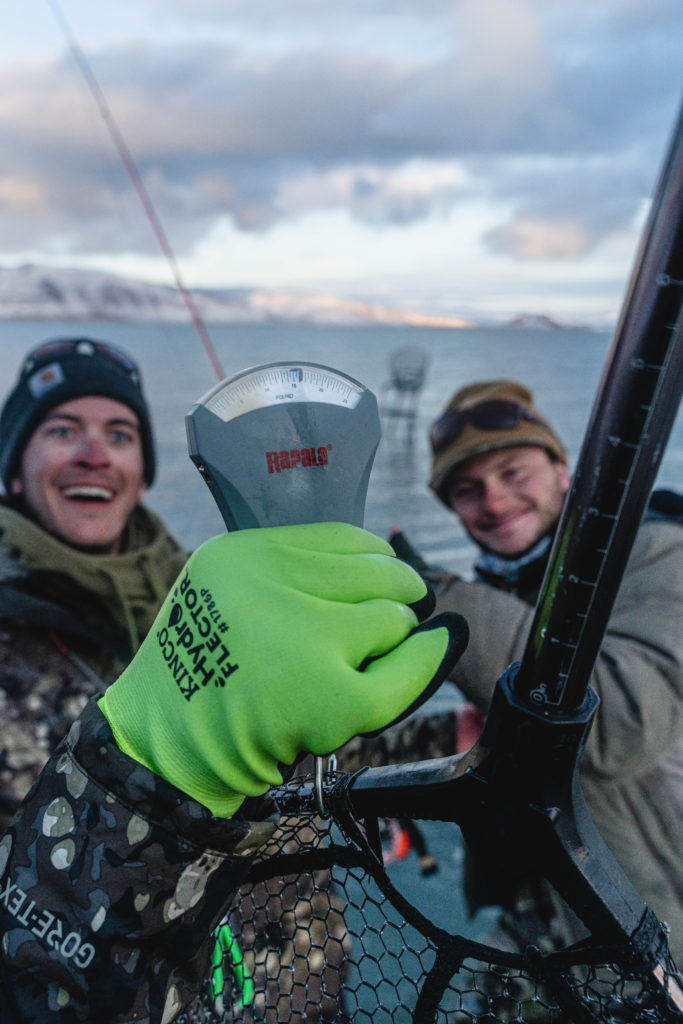
Photo by Keaun Beacom @keaun_b
As an angler, I am so grateful to have the opportunity to fish for these incredible fish, but it wouldn’t be possible without the dedicated work of the Paiute Tribe. The Paiute peoples called themselves “Cui-ui eaters,” and fished for Cui-ui and Lahontan Cutthroat Trout long before western settlement, the construction of the Derby Dam, and all of us silly fly fishermen sitting out there on ladders. Every time I go to Pyramid Lake, I am struck by this oasis in the middle of the desert, the colossal towers of Tufa, and think what it must have been like for the people who called this place home for thousands of years to make a living on this landscape. They saw the fishery that gave them life, identity and their name degraded and exploited. But, rather than giving up, they took on the responsibility and necessity of bringing their lake back to life and generously shared it with us fishermen. Pyramid Lake reminds me that our fisheries are worth fighting for, and that many of those in decline today still have hope!
Written by Cian McGillicuddy, Photos by Tim Stanley and Keaun Beacom

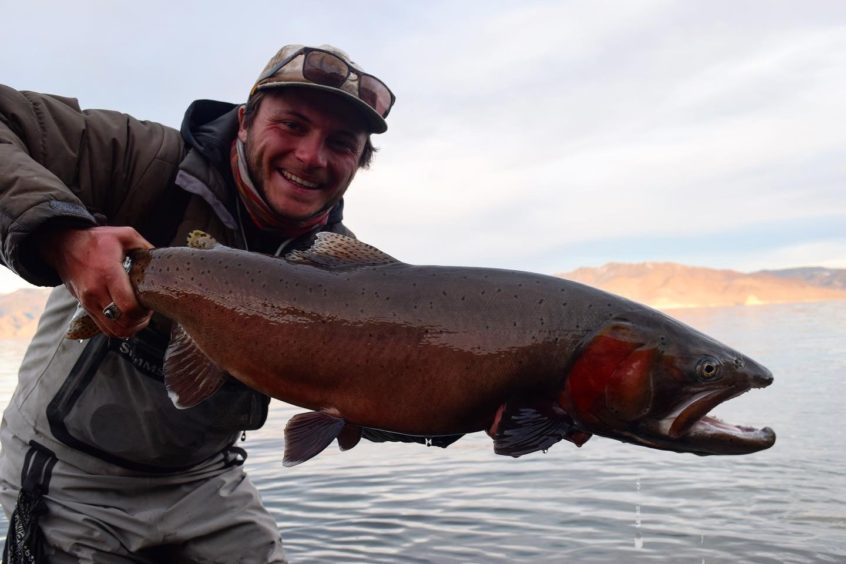
One Comment on “A Stillwater Adventure to The Salty Pond”
Great Article!